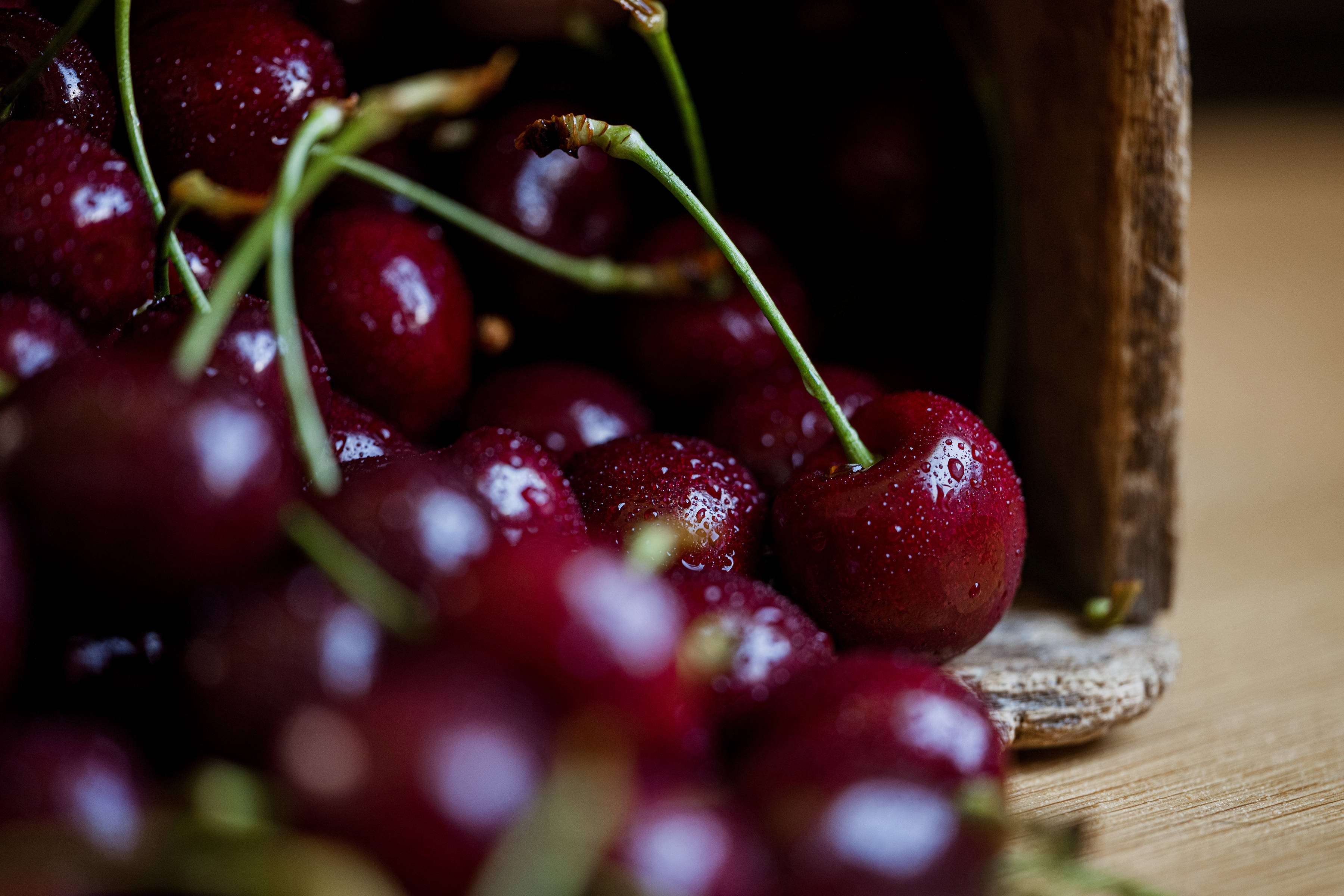
Simon Langworthy and Michelle Distill of Spreyton Fresh
Read more

Tasmania has an international reputation for producing large, sweet, dark red cherries.
As a temperate fruit, cherry production in Tasmania benefits from the cool growing conditions, clean water and relative pest and disease free environment.
The annual value of Tasmanian cherry exports is $48 million. Currently, major markets include Hong Kong, Taiwan, Vietnam, China, Singapore, Indonesia and Thailand. Tasmania exports to more than 20 markets. Tasmania currently produces more than 50% of Australia’s cherry exports.
The peak production time is January which aligns well with Lunar New Year celebrations in Asia.
The slow growing season allows fruit to mature fully, providing an intense flavour and colour. Our growers pick the fruit when it is at its very sweetest. Direct international air freight service means our fruit arrives earlier and stay fresh longer — picked, packed and arriving in Asia within 48–72 hours.
Tasmania is recognised as being free from over 30 different pests and diseases including fruit fly. Our Pest Free Area status provides access to a number of international markets where stringent import regulations are in place including Japan, South Korea, China and Taiwan.
December–February
Lapin, Simone, Sweetheart, Sylvia, Regina and Kordia, with new varieties including Sweet Georgia
6,500MT
2,152MT
Trade data sources Fresh Intelligence Consulting and Fruit Growers Tasmania
Being a remote island surrounded by water and aided by a robust biosecurity system, Tasmania remains free from many plant-related pests and diseases including Queensland fruit fly and Mediterranean fruit fly. This freedom means our produce can be exported with minimal, if any, phytosanitary treatment.
Cherries are grown predominantly in the Central North West, Coal Valley, Derwent Valley, Huon Valley, Southern Midlands and Tamar Valley regions of the state.
“Tasmanian cherries come from a natural environment. They are bigger in size and have great taste. We are very confident with Tasmanian cherries in the Chinese market.”
Tasmania’s relative pest free status offers trade opportunities for importing countries seeking access to Tasmanian grown produce.
This information is extracted from the Department of Agriculture Fisheries and Forestry’s Manual of Importing Country Requirements which is frequently updated. Please validate this information before proceeding further.
The importing country has no phytosanitary restrictions for entry into the market.
Open to Tasmania, without requiring any phytosanitary treatment.
Open to Tasmania but requires some phytosanitary treatment.
Through the generations our growers feel the pulse of the seasons and heartbeat of this land. They understand what thrives here — they take the time to grow produce with care. Meet some of our passionate, committed and knowledgeable Tasmanian growers…
Submit your interest and we will share your details with Tasmanian growers.